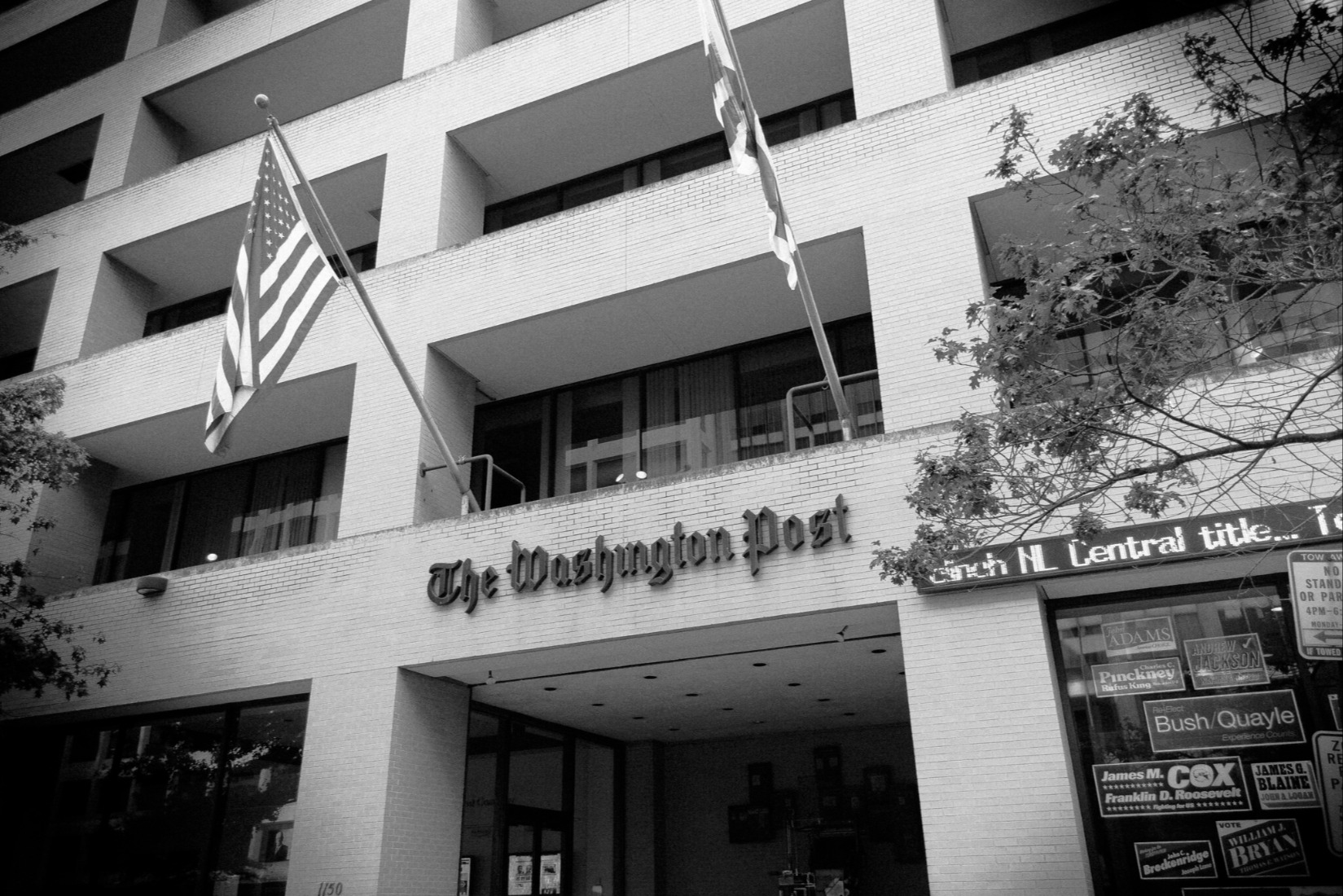Sanctuary Cities Under a Trump Administration
If President-elect Trump’s post-election rhetoric is to be believed, the pillars of his immigration policy appear to be slowly teetering.

Published by The Lawfare Institute
in Cooperation With

If President-elect Trump’s post-election rhetoric is to be believed, the pillars of his immigration policy appear to be slowly teetering. Trump’s border wall might be a fence, Mexico won’t pay for it, and two million criminal immigrants won’t be deported. But one campaign promise—Trump’s pledge to end “sanctuary cities”—seems to be holding up. Reince Priebus, the incoming White House Chief of Staff, recently echoed the President-elect’s criticism of cities that “ignore federal law, and then want the government to help.” In response, cities, states, and college campuses have doubled down on their promises to be “sanctuaries” for undocumented immigrants. But what can cities and states do to protect the deportation of the undocumented? And what powers would a Trump administration have to end these refuges?
What are Sanctuary Cities?
“Sanctuary city” is the widely used term for jurisdictions—states, counties, and cities—that limit their cooperation with Immigration and Customs Enforcement (ICE), the federal immigration authority housed within the Department of Homeland Security. Although estimates vary as to the number of sanctuary jurisdictions in the United States, a 2015 American Immigration Council report counted 4 states, 326 counties, and 32 cities across the country.
Sanctuary jurisdictions, like all other government subdivisions, are subject to federal immigration laws. Since “the federal power to determine immigration policy is well settled,” states and cities have limited authority to regulate immigrants and immigration. The federal government alone determines who can remain in the United States, so sanctuary jurisdictions cannot stop ICE agents from detaining or removing undocumented immigrants. States can pass certain laws relating to immigrants—for example, whether the undocumented can receive public benefits or pay in-state tuition. But the preemption doctrine prohibits states from passing laws that conflict with federal statutes, or even those that complement federal law when Congress intends to “occupy the field.”
Despite the constitutional limits on their powers, cities and states have developed two main ways to protect undocumented immigrants within the confines of the federal system. First, jurisdictions can limit the information they collect about their residents’ citizenship status. Second, jurisdictions can refuse to detain potentially undocumented immigrants solely on ICE’s request.
- Information Collection and Sharing
Early sanctuary cities restricted the information that local law enforcement could share with federal immigration authorities. For instance, starting in 1989, three consecutive mayors of New York—including prominent Trump loyalist Rudy Giuliani—prohibited city employees from reporting information regarding individuals’ immigration status. Bans on information-sharing encouraged undocumented immigrants to use city services, such as schools and hospitals, that asked for citizenship information for their own purposes. Yet in 1996, Congress passed the Immigration Reform Act, which included a provision—Section 1373—barring jurisdictions from restricting federal access to information about an individual’s immigration status. New York City challenged the constitutionality of Section 1373, but the Second Circuit upheld the provision.
Section 1373 invalidated the original bans on information-sharing. As recent Supreme Court jurisprudence suggests, the federal government can mandate disclosure of already-existing information about undocumented immigrants, but cannot force jurisdictions to collect additional information. The Department of Justice (DOJ) interpretation of Section 1373 adheres to this understanding. Because of Section 1373, many sanctuary jurisdictions now specifically instruct their police, schools, and hospitals not to ask individuals about their citizenship status, out of the fear that the federal government could force cities and states to disclose this information.
- Immigration Detainers
The second tactic used by sanctuary jurisdictions operates through the criminal justice system. When state or local police make an arrest, they routinely send the arrestee’s fingerprints to the FBI to determine whether the individual has a criminal record. Under the federal Secure Communities program (S-Comm), which began in 2008, and the Priority Enforcement Program (PEP), which replaced S-Comm in 2014, the FBI sends these fingerprints to ICE to determine the individual’s immigration status. (If a local police department sends fingerprints to the FBI, it cannot control whether the FBI then sends them to ICE.) If ICE flags the arrestee as a removable alien, it can send local law enforcement a detainer, asking for the individual to be kept in jail until ICE arrives for interviews or takes custody. But cities, counties, and states may not have to honor the detainers. In Galarza v. Szalczyk, the Third Circuit—relying on the Supreme Court’s decisions in New York v. United States and Printz v. United States—ruled that mandatory detainers would violate the anti-commandeering principles of the Tenth Amendment, which prevent the federal government from forcing local officials from carrying out a federal program. As a consequence, many sanctuary jurisdictions reject ICE’s requests and release individuals in accordance with their own policies.
The creation of PEP and new immigration enforcement priorities represents the Obama administration’s attempt to work with cities and states that had previously refused to honor detainers under S-Comm, a program piloted under the Bush administration. Under PEP, ICE now only issues detainer requests for high-priority detainees; in other cases, they issue “requests for notification,” asking local law enforcement when an individual would be released from local custody. Some sanctuary jurisdictions still refuse to participate in PEP.
How Could a Trump Administration Pressure Sanctuary Cities?
In an August speech on immigration, Trump promised that “cities that refuse to cooperate with federal authorities will not receive taxpayer dollars.” And Priebus recently stated that federal funding to sanctuary jurisdictions, which totals in the billions of dollars, will be a “matter of negotiation.” Passing legislation imposing major cuts on sanctuary jurisdictions’ funding may be difficult without a Republican supermajority in the Senate, and may also pose constitutional problems. But a Trump-directed DOJ may also have tools to reduce sanctuary jurisdictions’ funding without new legislation.
- Legislation
Congressional Republicans have already introduced legislation that would bar sanctuary jurisdictions from receiving major federal grants, depriving them of billions of dollars per year. But these bills may never reach the President’s desk. Though the House has passed legislation ending funding for sanctuary cities, Senate Democrats have twice blocked such bills. The legislation still appears to be at least six votes short of cloture, despite the support of two Senate Democrats (Joe Donnelly of Indiana and Joe Manchin of West Virginia).
Furthermore, the Supreme Court has limited Congress’s authority to secure state and local compliance with federal policy under the Spending Clause. In the section of NFIB v. Sebelius holding the Affordable Care Act’s Medicaid expansion unconstitutional, Chief Justice John Roberts wrote, “Congress may use its spending power to create incentives for States to act in accordance with federal policies. But when pressure turns into compulsion, the legislation runs contrary to our system of federalism.” Commentators and sanctuary jurisdictions have argued that ending federal funding for local programs unrelated to immigration may be the “gun to the head” that Congress is barred from using (though others have claimed that a proposed funding cut would pass constitutional muster).
- Justice Department Grant Funding
Over the last year, a back-and-forth between Congress and DOJ has highlighted a path for the President-elect to constitutionally cut access to certain funds without new legislation. Some DOJ grants to cities and states—including Justice Assistance Grants (JAG) and funds given through the State Criminal Alien Assistance Program (SCAAP)—require recipients to certify that they are in compliance with applicable federal laws, including Section 1373. In February, Representative John Culberson, a Texas Republican and chair of the House Subcommittee overseeing DOJ appropriations, sent a letter to Attorney General Loretta Lynch asking whether recipients of DOJ grants had indeed complied with Section 1373.
In response to Culberson’s letter, the DOJ’s Office of the Inspector General issued a report that analyzed the policies of ten jurisdictions—including California and New York City—receiving a total of $342 million under the programs. The report first found that local laws restricting information-sharing with ICE are “inconsistent with the plain language of Section 1373.” But second, and more importantly, the report found that refusals to honor ICE detainer requests “may have a broader practical impact on the level of cooperation afforded to ICE by these jurisdictions and may, therefore, be inconsistent with at least the intent of Section 1373.” In other words, jurisdictions that ignore detainer requests effectively instruct their employees to limit cooperation with ICE in violation of Section 1373.
DOJ guidance published in October 2016 states that non-compliance with Section 1373 “could result in a referral to the Department of Justice Inspector General, the withholding of grant funds or ineligibility for future OJP grants or subgrants, suspension or termination of the grant, or other administrative, civil, or criminal penalties, as appropriate.” For now, DOJ has stopped short of advising jurisdictions to honor detainer requests in order to preserve their grant eligibility. But the Inspector General’s report lays the groundwork for a potential change in policy under the new administration. Notably, the President-elect’s nominee for Attorney General, Jeff Sessions, praised the report after its release.
DOJ grants are only a small portion of the federal funding given to sanctuary jurisdictions. For instance, only $60 million out of the $8.5 billion New York City receives from the federal government comes from these grants. But because funding cuts conducted through the slashing of DOJ grants would be smaller and would relate directly to law enforcement, the Trump administration would be more likely to sidestep any constitutional problem by satisfying the test the Supreme Court laid out in South Dakota v. Dole to evaluate Congress’s power to limit local funding.
Nonetheless, President-elect Trump may have reasons to hesitate before cutting any funds. First, some mayors have reiterated that they will not reverse their sanctuary policies even in the face of drastic budget cuts; cutting only DOJ grants would inflict a much softer blow. Second, these DOJ grants are specifically allocated for local law enforcement. Law enforcement officials who supported Trump have balked at the proposed decrease in federal funding for police officers, which also goes against the President-elect’s emphasis on “law and order.” Ironically, while cutting off DOJ grants would be the easier means by which to crack down on sanctuary jurisdictions, this may be the very lever that Trump does not want to pull.
The author of this post interned at the New York City Law Department in 2016, including on projects related to immigration. The views in this post reflect the author’s views only.





